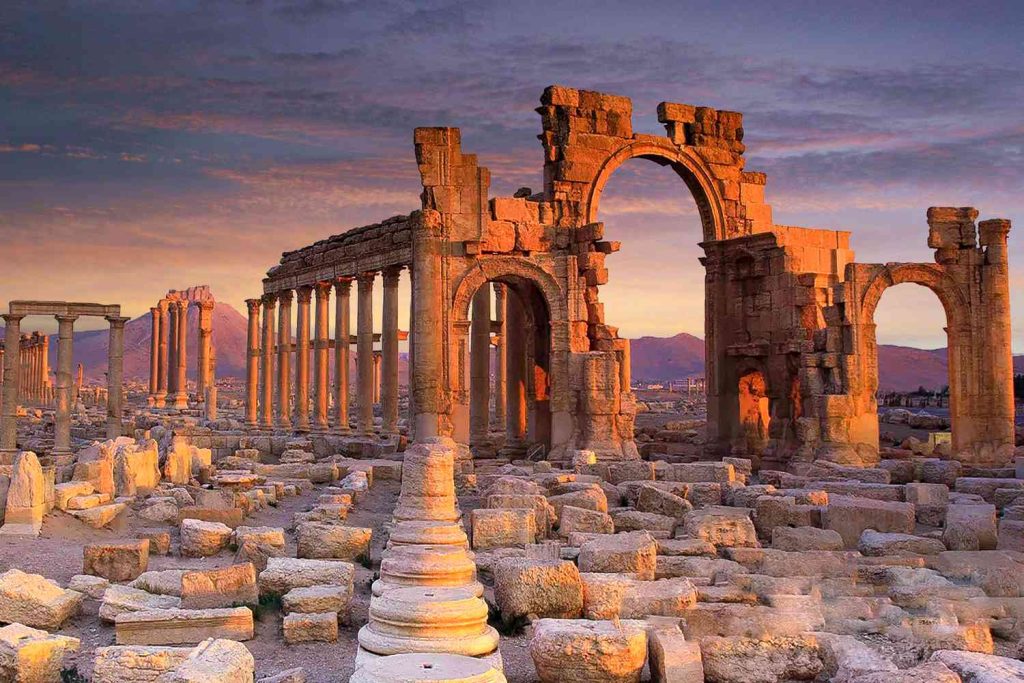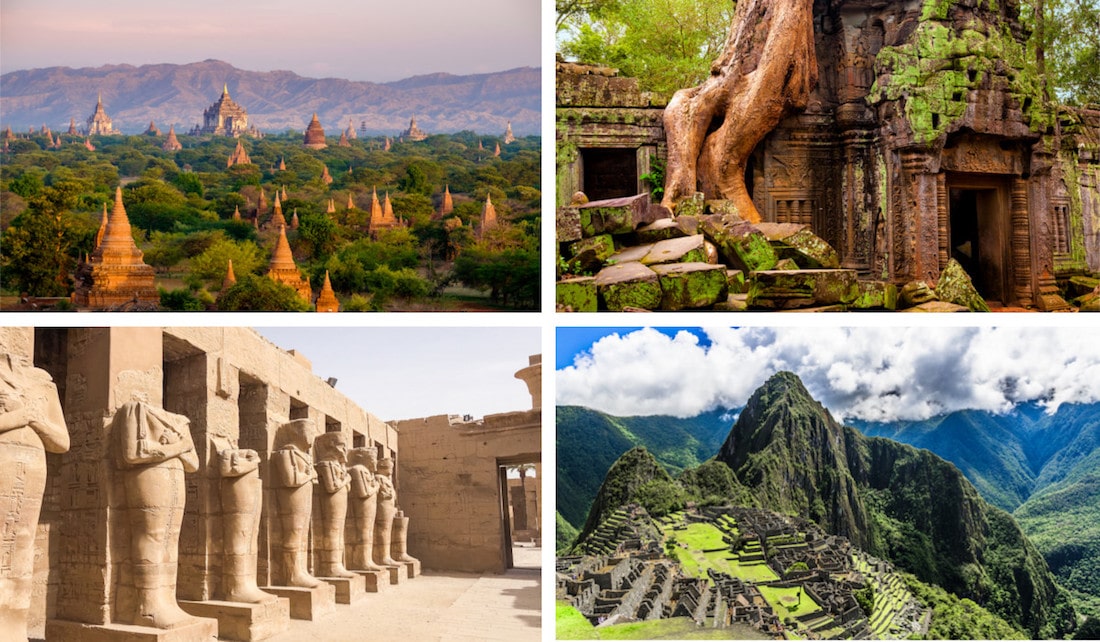Many people all throughout the world are fascinated and curious about ancient ruins. By providing a physical link to the past, these ruins of long-gone civilizations enable us to get a glimpse of our ancestors’ everyday life, architectural prowess, and cultural diversity. Not only can exploring historical ruins be educational, but it also fosters an emotional bond with the past. This article explores the importance, attraction, and conservation of historic sites.

Ancient Ruins’ Historical Significance
Ancient ruins are more than just rock and debris; they are the remains of once-vibrant societies that made important contributions to the history of humanity. Every location has a unique narrative that reflects the political, social, and economic climate of the era. Examples of the magnificence and intricacy of Roman engineering and urban design can be seen in the remains of ancient Rome, which include buildings like the Forum and the Colosseum.
Comparably, the length of the Great Wall of China—more than 13,000 miles—testifies to the military prowess and strategic vision of the ancient Chinese dynasties. Originally built as a barrier against invasions, the wall now represents China’s tenacity and might throughout history.
Innovative and Brilliant Architecture
Amazing feats of engineering and architecture can frequently be found among the remains of ancient civilizations. Without the use of contemporary equipment, these constructions showcase the creativity and craftsmanship of ancient builders. For example, the engineering wonders of Giza are the pyramids of Egypt. Built approximately 4,500 years ago, these structures have endured millennia of damage from both natural and human sources, and they continue to stand as a tribute to the mastery of ancient Egyptian architecture.
The excellent urban planning and architectural design of the Mayan metropolis of Tikal may be observed in its ruins located in Central America. These ruins demonstrate the profound knowledge of astronomy and mathematics that the Mayans possessed, which they applied into their construction techniques, with their tall temples and beautiful carvings.
Religious and Cultural Perspectives
Significant insights into the cultural and religious customs of earlier civilizations can also be gained from ancient ruins. One outstanding example is the Parthenon in Athens, Greece. It is devoted to the goddess Athena and displays the high caliber of Greek art as well as their deep religious commitment. The Parthenon’s elaborate sculptures and friezes impart important knowledge about Greek mythology and religious rites.
Asia’s Angkor Wat remains, located in Cambodia, bear witness to the splendor of the Khmer Empire and its Hindu-Buddhist ancestry. This enormous complex of temples was first constructed as a Hindu temple before being converted to a Buddhist shrine. Its intricate sculptures, which show historical events and mythological situations, provide a glimpse into the spiritual and cultural lives of the Khmer people.
Conservation and Difficulties
Ancient ruin preservation is a difficult and continuous task. The progressive degradation of these buildings can be brought about by natural processes such weathering, erosion, and vegetation development. Their integrity may also be threatened by human activity, such as vandalism, tourism, and urban expansion.
In order to guarantee the survival of historic ruins for future generations, conservation and protection efforts are essential. In this context, international agencies such as UNESCO are essential. UNESCO assists in attracting international attention and funding for the protection of places by designating them as World Heritage places. The Acropolis in Greece, the Pompeii archeological ruins in Italy, and the ancient Machu Picchu sanctuary in Peru are a few examples.
Technology’s Place in Preservation
The study and preservation of historic ruins have been completely transformed by modern technologies. With the use of tools like ground-penetrating radar, drone photography, and 3D laser scanning, archaeologists can record and examine ruins with previously unheard-of precision. With the aid of these technologies, intricate digital models can be produced for both instructional and repair objectives.
One example is the digital preservation of the ruins of Palmyra in Syria, which were partially damaged during recent conflicts, thanks to the application of 3D scanning technology. historic digital archives offer a way for people all around the world to virtually visit and study historic sites, as well as useful tools for restoration.
Explore More: The Art Gallery World: An Exploration into Originality
The Effects of Tourism
Ancient ruins are influenced by tourism in both positive and negative ways. Although tourism brings in money to support conservation efforts, it also puts a strain on these delicate locations. Maintaining the balance between access and preservation requires responsible tourism management.
The detrimental effects of tourism on historic sites can be lessened with the support of educational programs and sustainable tourism practices. It is possible to encourage visitors to adhere to rules that preserve the integrity of the sites, like staying on approved trails, avoiding contact with the structures, and observing local laws.

The Everlasting Allure of Historic Ruins
Ancient ruins have always been appealing because they make us feel connected to the past and awe and curiosity. These websites serve as a reminder of the universal human experience and the never-ending pursuit of truth, beauty, and significance. They encourage us to consider how we fit into the larger historical context and consider our own time and place.
Going to ancient ruins can be a life-changing experience that inspires wonder and reflection. We are constantly reminded of the inventiveness and tenacity of those who came before us, whether we are standing in front of the massive columns of the Temple of Karnak in Egypt, exploring the ruins of Pompeii, or taking in the sight of Stonehenge’s stone circles.
In summary
Ancient ruins are windows into the lives, accomplishments, and dreams of our predecessors; they are more than just artifacts from the past. These ancient ruins still enthrall and inspire us with their brilliant architecture, cultural relevance, and historical tales. We appreciate the history of human invention and make sure that the stories these treasures tell continue for future generations as we work to preserve and protect them.








